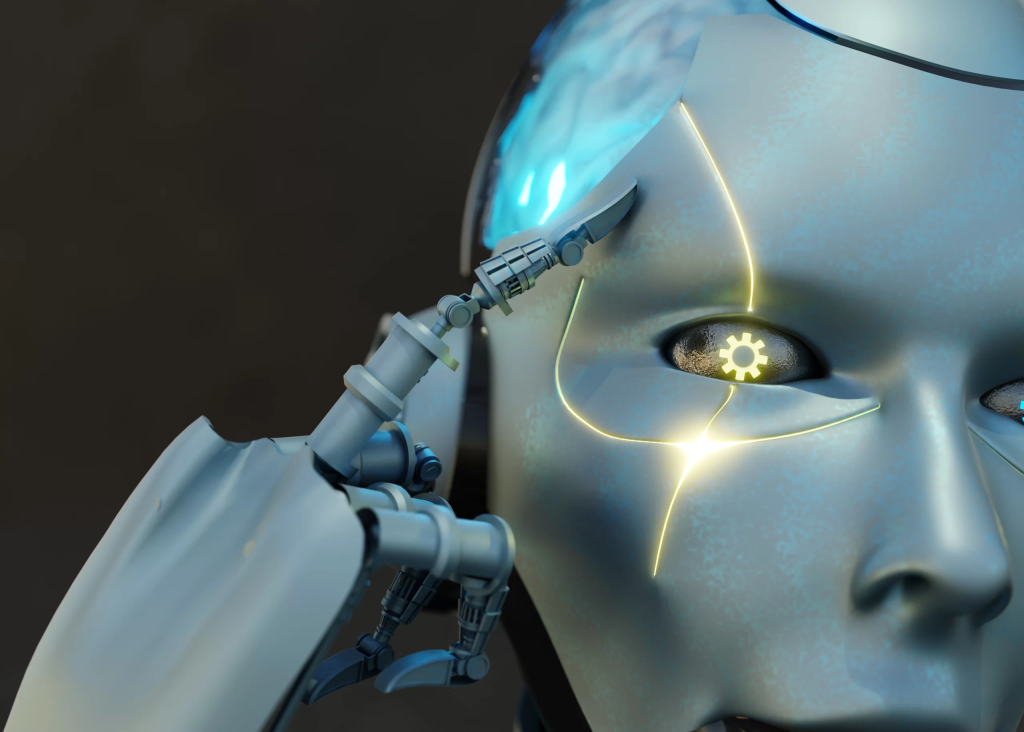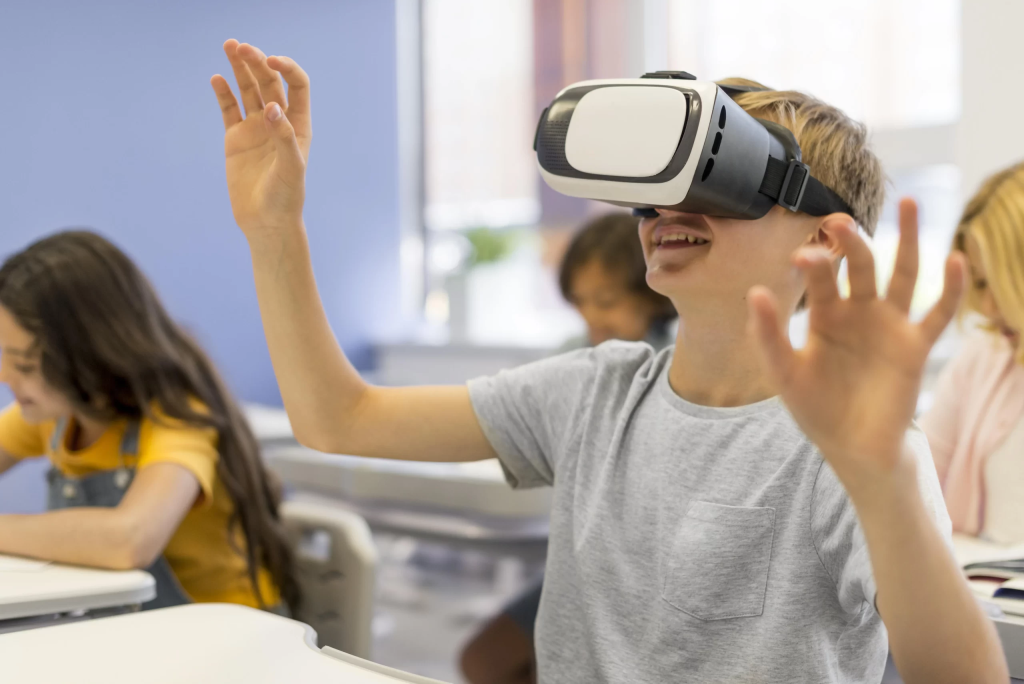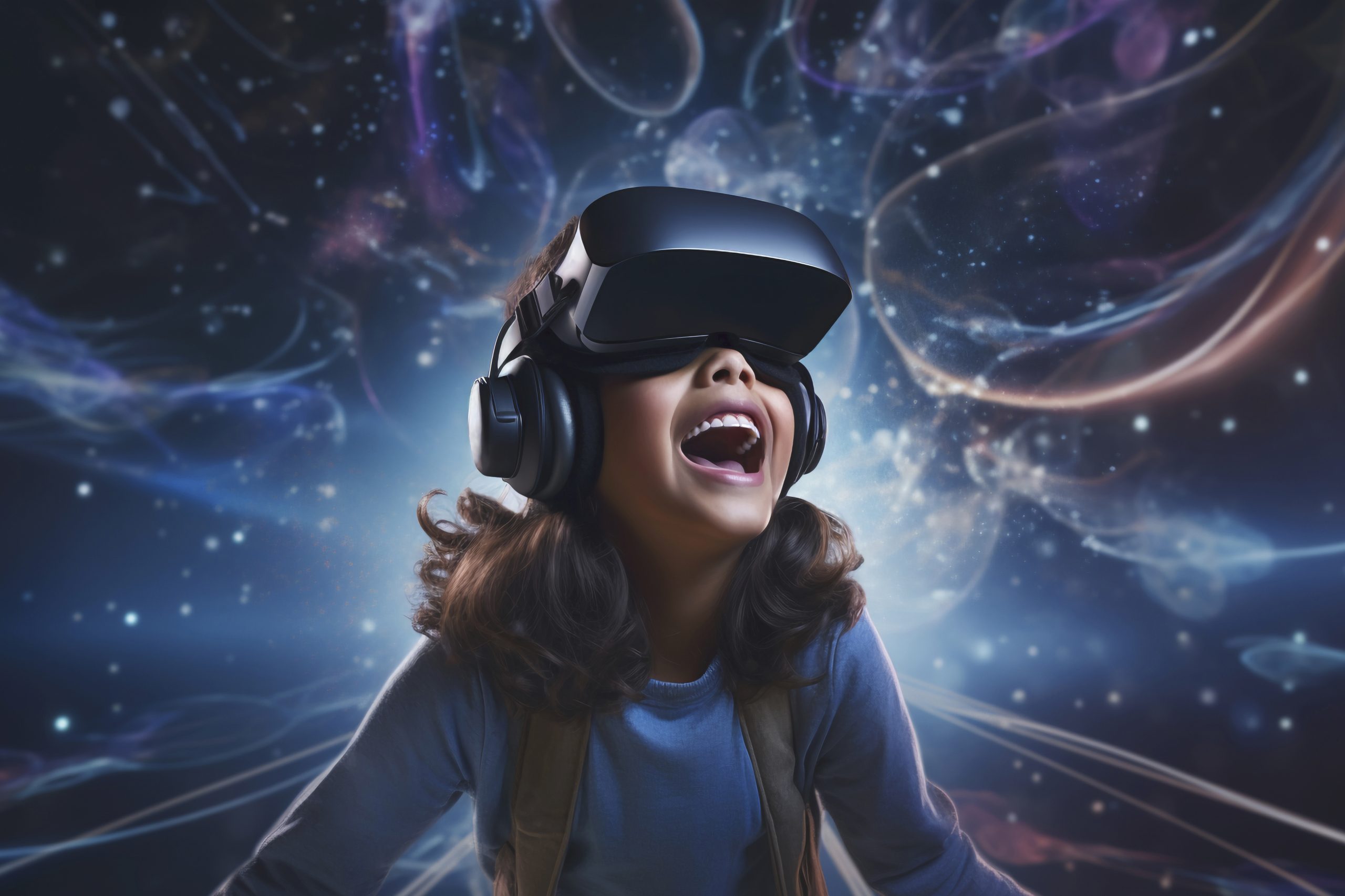In 2024, the AI and Machine Learning landscape is poised for a groundbreaking transformation. This revolution is driven by rapid advancements in AI software, including ChatGPT, Multimodal Learning, and the emergence of the Industrial Metaverse. These innovations are set to redefine industries and reshape the way we interact with technology, ushering in a new era of unprecedented possibilities.
What is Artificial Intelligence?
As the name implies, it is the creation of artificial intelligence by humans to mimic human intelligence using machines and softwares. Artificial Intelligence refers to the field of computer science dedicated to creating machines and software systems that replicate and simulate human-like intelligence and cognitive abilities. These AI systems are designed to perform tasks, solve problems, and make decisions, often with the goal of achieving human-level or superhuman-level performance in various domains.

What is Machine Learning?
Machine learning is a type of computer technology that allows machines to learn from data and improve their performance on specific tasks without being directly programmed. In essence, it’s a way for computers to get better at tasks by recognizing patterns in data, much like how humans learn from experience.
What is Multimodal Learning in a simple context?
Which domains are using Multimodal Learning as Technology to advance?
Multimodal learning is becoming increasingly important in various applications and technologies. Here are two case studies:
Case Study 1: Healthcare In the field of healthcare, Multimodal Learning is revolutionizing medical imaging. By combining data from different medical imaging techniques such as X-rays, MRIs, and CT scans, doctors can improve diagnostic accuracy significantly. This fusion of data allows for a more precise and comprehensive view of a patient’s condition, leading to better treatment decisions and outcomes.
Case Study 2: Education Multimodal learning is also making waves in education. Interactive e-learning platforms now integrate text, videos, and interactive simulations to offer diverse learning materials. This approach caters to different learning styles and enhances comprehension, making education more engaging and effective.
These are just a few examples, but the concept of multimodal learning is expanding across many domains as technology continues to advance while significantly speeding human lives and transforming industries.
What is the emergence of the Industrial Metaverse?
The “Industrial Metaverse” is a term used to describe the convergence of digital technologies, virtual environments, and data analytics within industrial and manufacturing sectors. It represents the application of metaverse concepts (originally associated with virtual worlds and augmented reality) to enhance and transform various aspects of industry and manufacturing.

Here’s a simplified explanation for the emergence of the Industrial Metaverse refers to the growing adoption of virtual and digital technologies in industrial settings,
- Digital Twins: Automotive companies now create digital twins of their production lines, allowing them to monitor machinery health and predict maintenance needs, reducing downtime.
- Augmented Reality (AR) and Virtual Reality (VR): Boeing uses AR glasses for its technicians to access real-time aircraft maintenance data, enhancing safety and efficiency.
- IoT (Internet of Things): In agriculture, IoT sensors in soil and crops collect data to optimize irrigation, resulting in water conservation and higher crop yields.
- Data Analytics: Shell employs data analytics to monitor oil and gas operations, helping identify potential equipment failures and improving drilling efficiency.
- Collaborative Workspaces: Engineering teams across continents collaborate on vehicle design using VR environments, reducing development time.
- Supply Chain Optimization: IBM Food Trust uses blockchain to trace food products from farm to shelf, ensuring food safety and reducing waste.
- Automation and Robotics: At Tesla’s self-driving car Giga factories, AI-driven robots are instrumental in car production, significantly boosting both output and precision.
In essence, the Industrial Metaverse represents a shift toward a more digitized and interconnected industrial landscape, where virtual and digital technologies are used to enhance productivity, efficiency, and innovation across multiple industrial sectors such as energy, manufacturing, transportation, and more. It’s a vision of a highly interconnected and data-driven industrial future.
Related Terminology
Augmented Reality:
Augmented reality (AR) is like a magic window into the real world. It uses technology to add computer-generated things, like pictures, videos, or information, to what you see around you. Imagine looking at your smartphone’s camera, and on the screen, you see virtual objects that appear to be part of the real world. That’s AR – mixing the real world with digital stuff to make your experience more interesting or useful.

Here’s a real-life example of augmented reality, imagine you’re walking down the street with your smartphone. You open a navigation app, and instead of just seeing a map, your phone’s camera shows you the actual street view. However, it also adds arrows and signs directly onto the screen, overlaid on the real-world scene, guiding you to your destination as you move.
These digital arrows and signs are not really there in the physical world; they are part of the augmented reality provided by the app. This helps you find your way more easily in the real world with the assistance of digital information.
Natural Language Processing (NLP):
This is a subfield of AI a.k.a Artificial Intelligence that focuses on the interaction between computers and human language by breaking down the language barrier into a format that can be comprehend and used by both humans and computers. NLP precisely enables machines to understand, interpret, and generate human language.
A real-time example of Natural Language Processing (NLP) in action is the use of chatbots in customer service. Many companies employ AI-powered chatbots on their websites or messaging platforms to interact with customers.
When a customer types a question or issue in natural language, the chatbot uses NLP algorithms to analyze and understand the text. It then generates a relevant response or takes appropriate actions based on the customer’s query. This interaction happens in real-time, allowing customers to get assistance or information immediately, even outside of regular business hours.
For instance, if you visit a retail website and ask a chatbot, “Can you help me find a pair of black running shoes in size 9?”, the NLP-driven chatbot will process your request, understand the keywords and intent (“find black running shoes in size 9”), and provide you with product recommendations or direct you to the relevant product pages.
This is also one of the subfields of AI. It is a type of computer technology that tries to make computers think and learn like the human brain. It involves using computer programs called artificial neural networks to process information and make decisions in a way that resembles how our brains work.
These networks have many layers of interconnected parts, allowing them to understand and learn from complex data, such as images, text, and sound, without needing direct instructions from humans.
Deep learning has been employed to deal with challenging problems like recognizing uncanny similarity in pictures of objects, comprehending verbal languages, and even playing complex games, transforming it into a powerful assest in the field of artificial intelligence.
Data Privacy:
Data Privacy is of paramount importance, especially in the context of AI and data-driven technologies. It revolves around safeguarding individuals’ personal information from unauthorized access or misuse. The General Data Protection Regulation (GDPR), a prominent regulatory framework in the European Union, plays a pivotal role in shaping data privacy practices.
GDPR imposes stringent rules on how organizations collect, process, and store personal data. It empowers individuals with greater control over their data and requires companies to obtain clear consent before using their information.
The impact of GDPR extends globally, influencing the way businesses handle data worldwide. It serves as a model for privacy regulations and highlights the need for responsible data management in the era of AI, where massive datasets drive innovations, but data privacy remains a fundamental right.
Predictive Maintenance:
Predictive maintenance as the name implies, early prediction of possible failure or problems. It is a cornerstone of the Industrial Metaverse, and is a game-changer in industrial operations. Leveraging data and AI capabilities, it goes beyond traditional maintenance approaches by predicting when equipment might fail. By continuously monitoring equipment performance and analyzing data patterns, predictive maintenance systems can provide early warnings of potential issues.
This proactive approach allows organizations to schedule maintenance precisely when it’s needed, minimizing downtime, reducing costs, and ensuring the optimal functioning of machinery.
Smart Contracts:
In the context of supply chain optimization, smart contracts play a crucial role. These innovative digital agreements are self-executing, with the terms and conditions of the contract directly encoded into computer software. This means that once predefined conditions are met, the contract executes automatically without the need for intermediaries or manual intervention.
Smart contracts enhance transparency and efficiency in supply chain processes, ensuring that agreements are securely and swiftly executed, ultimately streamlining operations and reducing costs. They are a prime example of how blockchain technology is revolutionizing the way businesses manage and optimize their supply chains.
Haptic Feedback:
Haptic feedback, a key component in the world of Augmented Reality (AR) and Virtual Reality (VR), adds a compelling layer of immersion to these experiences. It’s the technology that recreates the sense of touch by delivering vibrations or other tactile sensations to users. When you wear a VR headset or use AR gloves, haptic feedback can simulate the feeling of touching virtual objects or surfaces, enhancing the overall sense of presence and realism.

In the world of movies, this technology is also making waves. Imagine feeling the rumble of an explosion or the gentle touch of a character’s hand on your shoulder while watching a film in VR. It takes movie-watching to a whole new level by allowing you to physically experience the scenes, making it an unforgettable cinematic adventure.
This sensory feedback not only enriches entertainment and gaming experiences but also has practical applications, such as medical training simulations or remote industrial operations, where physical touch sensations can be crucial for effective training and decision-making.
Blockchain Technology:
Blockchain technology is a revolutionary system that finds applications across various domains, with supply chain optimization and digital currencies being prime examples. It ensures transparency, security, and immutability of data by creating a decentralized and tamper-proof ledger.
In supply chains, each transaction or event related to the movement of goods is recorded as a block in the chain. These blocks are linked chronologically, forming a secure and transparent record of every step in the supply chain journey.
Similarly, in the realm of digital currencies, blockchain underpins cryptocurrencies like Bitcoin, providing a transparent and secure way to verify and record financial transactions. This technology enables stakeholders to trace products, verify financial transactions, and enhance trust in various industries, making it a versatile tool for data management and security.


